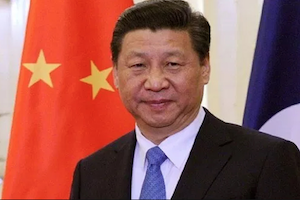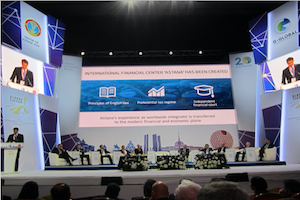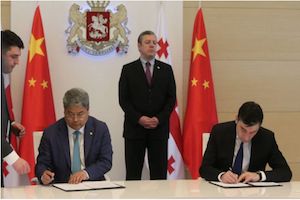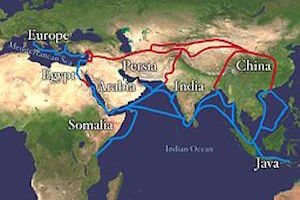Protecting BRI: China's Foreign Security Concerns
By Sudha Ramachandran
March 14, 2019, the CACI Analyst
In November 2018, Baluch militants, angry with China’s exploitation of their resources through Belt and Road Initiative (BRI) projects, attacked the Chinese consulate in Karachi, Pakistan. This underscored the vulnerability of Chinese nationals and infrastructure projects outside China’s borders to terrorism. In addition, China’s repression of Muslim Uighurs in its Xinjiang province has drawn the ire of Uighur militants and jihadist groups. China will have to find a way to secure its nationals abroad and projects in BRI member-states, without triggering alarm among BRI skeptics.

Building the Great Financial Silk Road: Hub by Hub
By Rafis Abazov
October 16, 2018, the CACI Analyst
During the Astana Financial Days event in July 2018, President Nursultan Nazarbayev of Kazakhstan announced and personally endorsed the opening of the Astana International Financial Center (AIFC). He envisions that the AIFC will provide financial services “not only for Kazakhstan, but also for the whole world.” If successful, the AIFC can contribute to diversifying the financial resources for Kazakhstan’s national and international projects. Through its proper implementation, the government of Kazakhstan can develop a tool for improving collaboration with neighboring countries in Central Asia in the industrial, agricultural and tourism sectors, making the Central Asian section of the Silk Road more attractive for business and financial deals. In addition, the Center can become a real financial hub not only for Kazakhstan and Central Asia but also for the wider Eurasia region if it is capable of attracting enough financial resources from large international players.

Growing Chinese Interests in Georgia
By Emil Avdaliani
March 15, 2018, the CACI Analyst
The Free Trade Agreement between China and Georgia, signed in 2017, came into force on January 1. This will allow Georgian products free access to one of the world’s largest consumer markets, and will free approximately 94 percent of Georgian products from customs taxes. The growth of China’s economic interests has increased Georgia’s hope of playing a role in in Beijing’s Belt and Road Initiative (BRI). By extension, China’s increasing presence in the South Caucasus raises questions regarding the compatibility of Beijing’s interests with those of the region’s traditional hegemon, Russia.

The Belt and Road Initiative and China's Xinjiang Dilemma: “Connectivity” Versus Control?
By Michael Clarke
July 20, 2017, the CACI Analyst
President Xi Jinping’s ambitious “Belt and Road Initiative” (BRI) seeks to make China the hub of trans-Eurasian economic connectivity by linking the Chinese economy with the major continental and maritime zones of the Eurasian continent through both physical and financial infrastructure. President Xi has proclaimed that BRI will “benefit people across the whole world” as it will be based on the “Silk Road spirit” of “peace and cooperation, openness and inclusiveness”. This rhetoric may be enhancing Beijing’s diplomatic position but it is one that rings hollow in China’s own Eurasian frontiers such as Xinjiang where BRI is coinciding with the imposition of new forms of political and social control.

New signs of Chinese military interest in Central Asia
By Stephen Blank
January 16th, 2017, The CACI Analyst
Recent evidence shows a gradual increase in Chinese military activity in Central Asia, particularly with Tajikistan, Afghanistan, and Pakistan, although China has for years denied any military interest in the region. In October, PLA and Tajik forces jointly participated in counterterrorism exercises in Tajikistan near the border with Afghanistan, following earlier activity in 2016. Whereas Tajikistan was then silent, this time it publicized the exercises, which aroused a visible anxiety in the Russian media although the Russian government has hitherto been unwilling to comment on this issue. China’s initiative could imply a major new development in Chinese policy and in Central Asia’s overall security, with lasting implications for the region.



